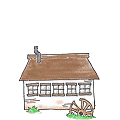There are four main elders for our purposes - nigra (european), canadensis (American, mainly east of Rockies), blue (cerulea) and red (racemosa).
All parts of the elder(Berry) contain cyanide and other problematic (and medicinally beneficial) compounds, such as alkaloids. Some parts have especially concentrated amounts, like the
roots. Concentration in certain plant parts also varies over the growing season and because of other factors. Using the various parts of the elder as medicine have a long history, but require care to follow preparation methods dutifully.
Cyanide is relatively easy to deal with, as it vaporizes at around 70 degrees fahrenheit. Fermentation temperatures and length of time or cooking both easily achieve this if of sufficient duration and temperature. For crafting with elder, the wood was generally dried (not used green) and sometimes exposed to sun/heat to ensure removal of cyanide and thus the creation of a safe final product.
Many animals that have developed defenses against elderberry eat all the parts of the plant or certain parts. Domesticated animals generally are not impacted by elder, as its naseaua inducing effect usually quickly trains them to avoid the plant, but care
should be taken if your animals will have access to your elder.
Red is generally considered the most toxic. Nigra is also generally considered toxic in all plant parts.
There is some evidence that the fully ripe berries of canadensis (or at least some cultivars of canadensis) are free of cyanide. This research is pending publication.


